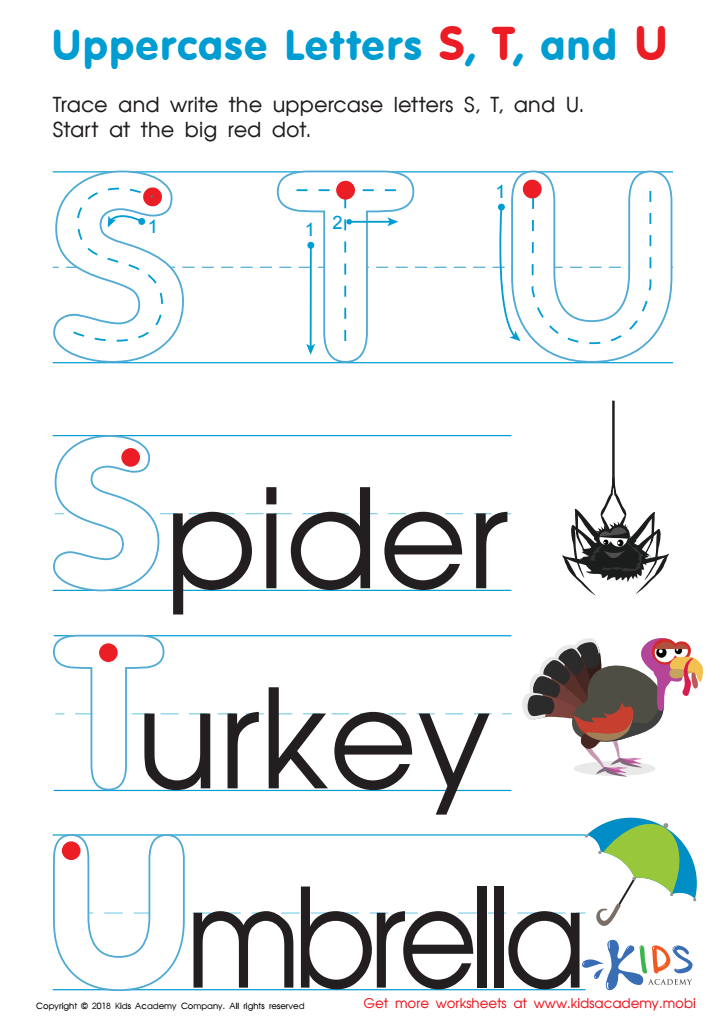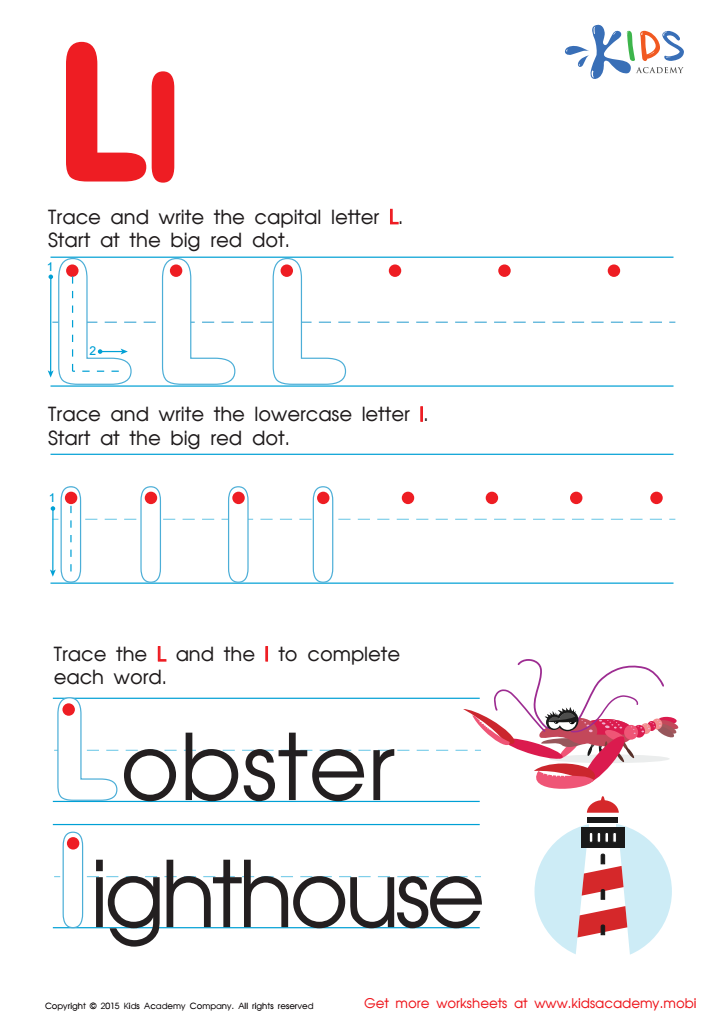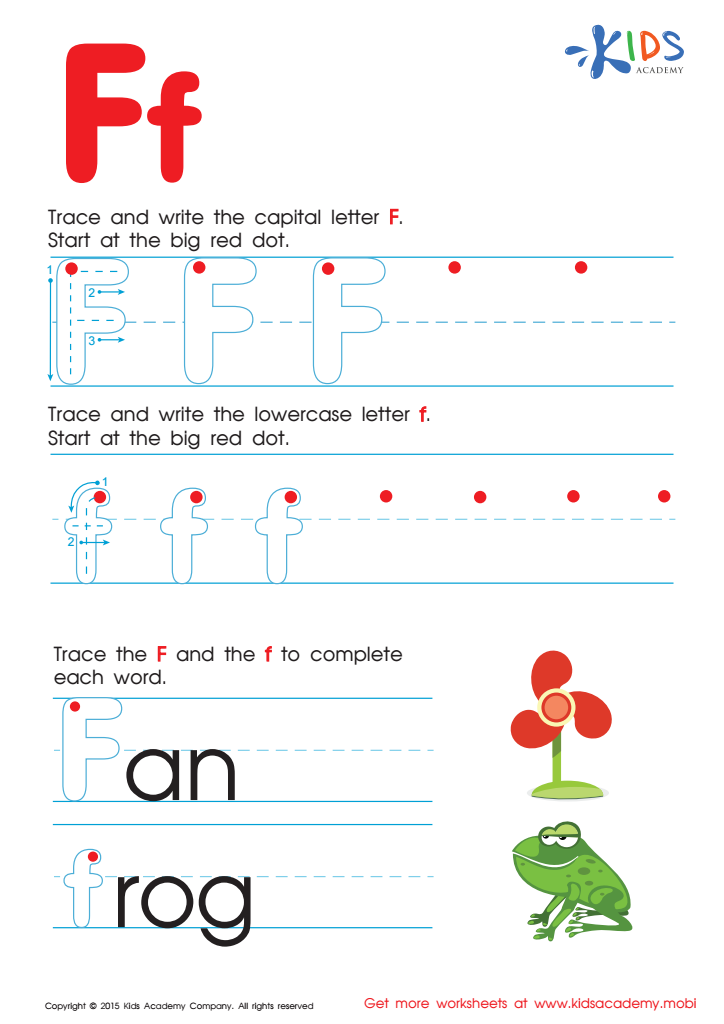Alphabet Learning Normal Letter Recognition Worksheets for Ages 5-8
3 filtered results
-
From - To
Discover our engaging "Alphabet Learning Normal Letter Recognition Worksheets," designed specifically for children aged 5-8. These printable activities support early literacy skills by fostering familiarity with uppercase and lowercase letters through fun and interactive exercises. Each worksheet encourages children to identify, trace, and practice letters while enhancing their phonetic recognition and writing abilities. Ideal for teachers and parents, these resources blend education with play, making learning enjoyable. Perfect for classroom use or at-home learning sessions, our worksheets make it easy to support your child's alphabet mastery. Start your journey to confident reading and writing today with our thoughtfully crafted materials!


Uppercase Letters S, T, and U Worksheet


Letter L Tracing Page


Letter F Tracing Page
Understanding and recognizing letters is a fundamental skill that serves as the building block for literacy in young children. For parents and teachers of children aged 5-8, caring about normal letter recognition is essential for several reasons.
Firstly, letter recognition is critical for the development of reading skills. When children can identify both uppercase and lowercase letters, they gain confidence in their ability to decode words. This skill enhances their reading fluency and comprehension, allowing them to enjoy stories more fully.
Secondly, letter recognition fosters writing abilities. Children who can readily identify letters are better equipped to practice writing, subsequently improving their spelling and overall communication skills. This can lead to a more positive self-image as they advance in their education.
Additionally, letter recognition is often a vital aspect of kindergarten and early grade curricula, and early intervention can ease any learning challenges. Teachers nurturing this skill can effectively identify students who may be struggling and provide tailored support.
Finally, promoting letter recognition helps cultivate a lifelong love for literacy. When parents and teachers emphasize the importance of these foundational skills, they set children on a path to academic success and a greater appreciation for language and literature.

 Assign to My Students
Assign to My Students

















